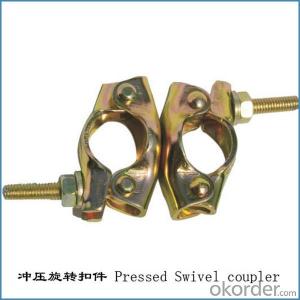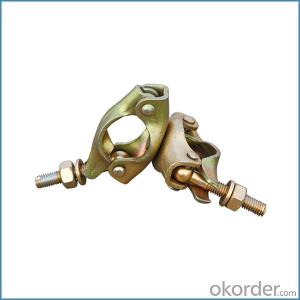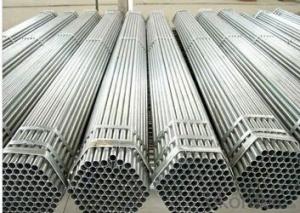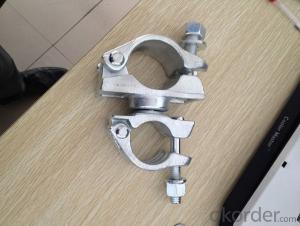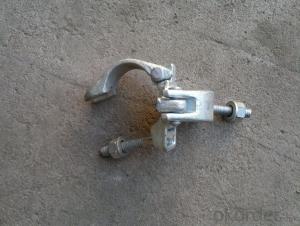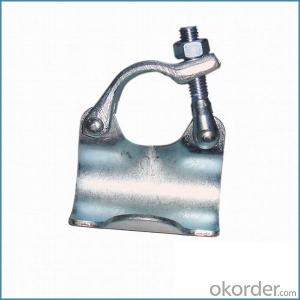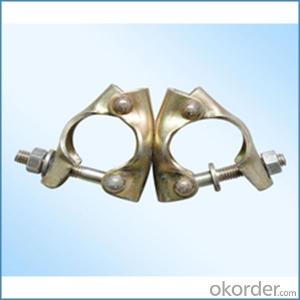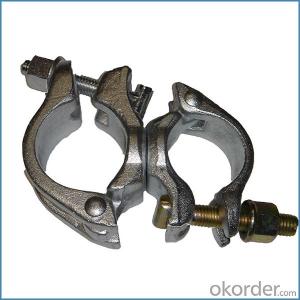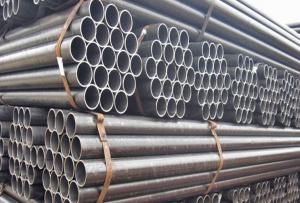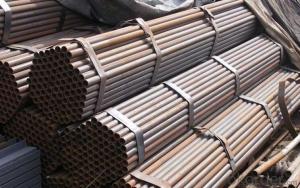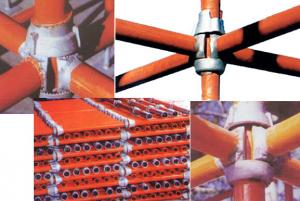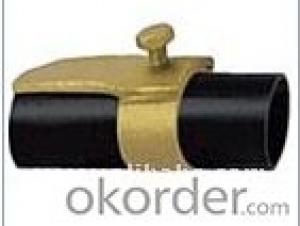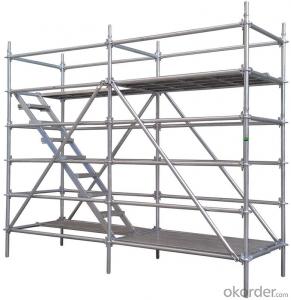Scaffolding Forged Coupler British Type for Sale
- Loading Port:
- Tianjin
- Payment Terms:
- TT OR LC
- Min Order Qty:
- 1000 kg
- Supply Capability:
- 100000 kg/month
OKorder Service Pledge
OKorder Financial Service
You Might Also Like
Scaffolding Forged Coupler British Type for Sale
Description
1.The scaffolding coupler is always used to connect the steel pipe as scaffolding system.
2.The often used coupler is swivel coupler and righ angle coupler .
3.We can provide types of scaffolding coupler according to your requirement.
4.Couoler can fix the 48.3mm scaffolding steel pipe tightly and make the whole scaffolding system more steadily.
5.Material:Q235 steel
6.Overall Size:48.3mm*48.3mm
7.Surface Finish: Galvanized/ Painted
8.Standard:BS1139,EN74
9.Package:25pcs/bag
10.Manufactuering as per customer requirements
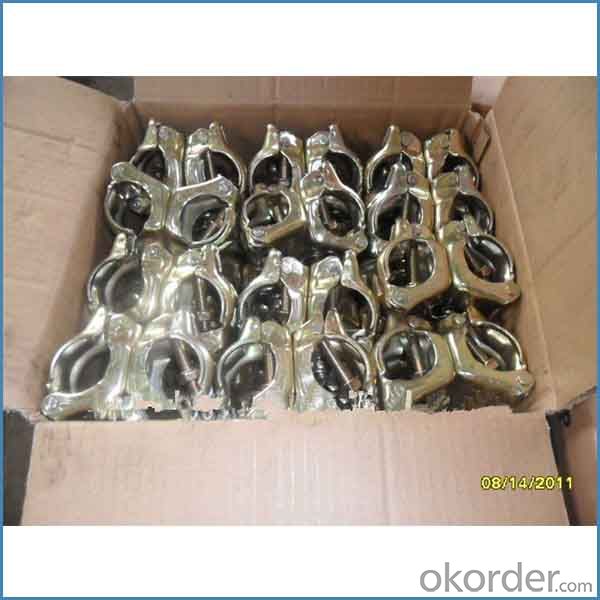
Feature
(1)Excellent Anti-Breaking—Cold Pressed Steel
(2)Outstanding Resistance Deformation
(3)Strong Anti-Dropping Ability
(4)Longtime USe
(5)Qualtity Guaranteed
(6)OEM Service
Photo
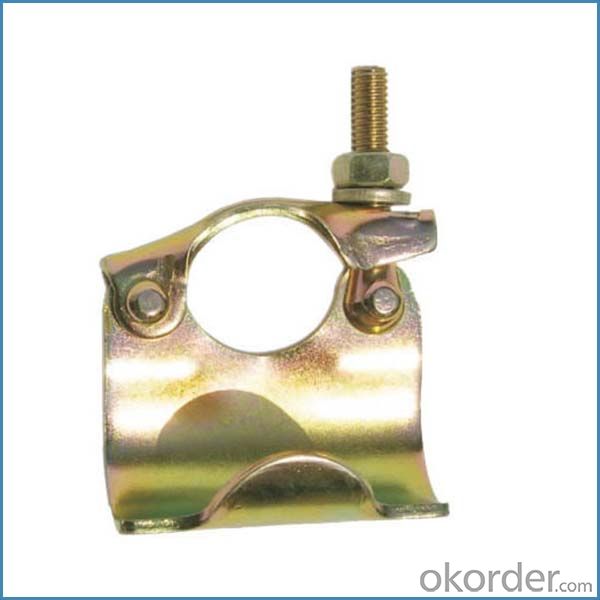
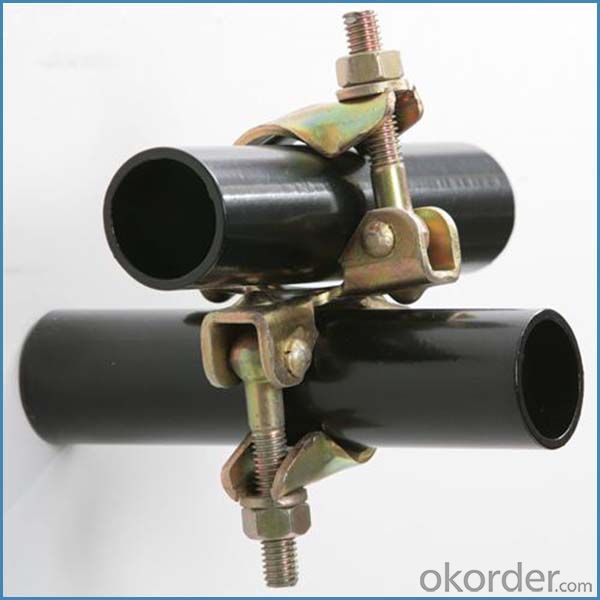
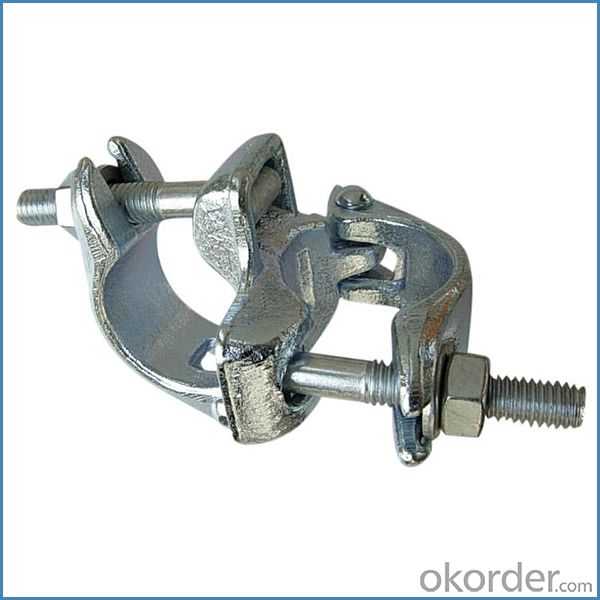
Parameter
| Material | Q235,345steel |
| Size | 48.3mm*48.3mm |
| Surface finish | Galvanized |
| Weight | 1.1kg around |
| Standard | BS1139,EN74 |
| Package | 25pcs/bag,steel pallet |
| Manufacture | As per customer requirement |
| Market | Africa, South America, the Middle East and Asia |
FAQ
Q: Are you a factory or trading company?
We are a state-owned corporation in China,dealing with various kinds of building materials.We have our holding subsidiaries.
Q: Where is your factory located? How can I visit there?
Our factory is located all around China.
Q: Can I get some samples?
Sample is free, customer only pay freight for the first time.
Q: Delivery?
10-30days. (5-15 containers)
Any question,feel free to contact us.
- Q:What are the typical weight limits for steel tube couplers in scaffolding applications?
- The typical weight limits for steel tube couplers in scaffolding applications vary depending on the specific type and design of the coupler. However, in general, steel tube couplers used in scaffolding are designed to withstand heavy loads and are capable of supporting significant weight. For example, a standard forged steel sleeve coupler, which is commonly used in scaffold connections, is typically rated to support a maximum load of around 3,000 pounds (1,360 kilograms). This means that each individual coupler is capable of supporting this amount of weight when properly installed and used in combination with other couplers and scaffolding components. It is important to note that weight limits for steel tube couplers also depend on various factors such as the diameter and thickness of the tubes being connected, the type of scaffolding system being used, and the overall design and integrity of the entire scaffolding structure. Therefore, it is crucial to follow the manufacturer's specifications and guidelines, as well as any applicable local regulations, to ensure the safe and proper use of steel tube couplers in scaffolding applications. In any case, it is always advisable to consult with a qualified scaffolding engineer or a reputable supplier to determine the specific weight limits and load-bearing capacities of steel tube couplers for your particular scaffolding project.
- Q:Can steel tube couplers be used in scaffolding structures that need to support heavy equipment or machinery?
- Yes, steel tube couplers can be used in scaffolding structures that need to support heavy equipment or machinery. Steel tube couplers are commonly used in scaffolding systems to connect the tubes together and provide stability and strength. They are designed to withstand heavy loads and are constructed from high-quality steel, making them suitable for supporting heavy equipment or machinery. Additionally, steel tube couplers have a high load-bearing capacity and are able to distribute weight evenly, ensuring the stability and safety of the scaffolding structure. Therefore, steel tube couplers are an ideal choice for scaffolding structures that need to support heavy equipment or machinery.
- Q:What is the recommended spacing between steel tube couplers in a scaffolding structure?
- The recommended spacing between steel tube couplers in a scaffolding structure is typically around 2 meters or 6 feet. However, it is important to consult specific local regulations and guidelines as they may vary depending on the specific circumstances and load requirements of the scaffolding.
- Q:Are steel tube couplers compatible with scaffolding projects involving suspended platforms or swing stages?
- Yes, steel tube couplers are compatible with scaffolding projects involving suspended platforms or swing stages. Steel tube couplers are commonly used in the construction industry to connect and secure steel tubes in scaffolding structures. They provide a strong and reliable connection that can withstand the weight and movement associated with suspended platforms or swing stages.
- Q:Can steel tube couplers be used in scaffolding structures with specialized requirements, such as protection against extreme temperatures or fire?
- Yes, steel tube couplers can be used in scaffolding structures with specialized requirements, including protection against extreme temperatures or fire. Steel tube couplers are typically made from high-quality steel and are designed to provide strong connections between scaffolding tubes. This makes them suitable for use in various environments, including those with extreme temperatures or fire hazards. However, it is essential to ensure that the specific steel tube couplers being used are certified for such specialized requirements to ensure maximum safety and performance.
- Q:What is the minimum spacing between the crossbar and the pole spacing of the scaffold?
- According to JGJ130-2011 "construction of fastener type steel pipe scaffold safety technical specifications" is just that should not exceed 50 meters. Did not explain the restrictions on workers to shelve construction. May be specific to a more specific program scaffolding calculation book to calculate. Should be and step, span, even wall pieces, scissors, and other specific size settings associated.
- Q:Can steel tube couplers be used in scaffolding applications with curved or irregular shapes?
- Scaffolding applications with curved or irregular shapes can utilize steel tube couplers, but it is important to take additional measures and seek expertise to guarantee proper installation and stability. The primary function of steel tube couplers in scaffolding is to connect and secure the tubes together, forming a stable structure. They are commonly used in straight, vertical, or horizontal configurations, but they can also be employed for scaffolding structures with curved or irregular shapes. When dealing with curved or irregular shapes, it is crucial to consider the specific requirements and limitations of the steel tube couplers being used. The design and specifications of the couplers should be evaluated to ensure they can accommodate the varying angles and shapes of the scaffolding structure. In certain cases, it may be necessary to utilize additional components or specialized couplers to achieve the desired curved or irregular shape. These could include swivel couplers, adjustable couplers, or other connectors that allow for flexibility and adjustment. Moreover, consulting experienced scaffolding professionals or engineers is of utmost importance when designing and constructing scaffolding systems with curved or irregular shapes. They can provide guidance and expertise, analyzing the specific requirements of the project and recommending appropriate couplers and techniques to ensure the stability and safety of the scaffolding structure. Overall, while steel tube couplers can be utilized in scaffolding applications with curved or irregular shapes, it is essential to carefully consider the specific requirements and seek professional advice to guarantee proper installation and structural integrity.
- Q:Fastener type steel pipe scaffold strength is generally how much
- Yes, also known as big core board. Mainly to make the interior of the decorations, such as the interior of the door. The outside should be affixed to a layer of decorations can, so can not directly on the big core board to paint. There are differences between the different regions, but roughly between 65-100 yuan each.
- Q:Are there any specific instructions for tightening steel tube couplers in scaffolding?
- Tightening steel tube couplers in scaffolding requires following specific instructions. First and foremost, it is crucial to ensure that the couplers match the size and type of the scaffolding tubes being used. The couplers should fit snugly around the tubes to establish a secure connection. Before tightening the couplers, it is advised to thoroughly clean and inspect both the couplers and the tubes. Any dirt, debris, or damage should be eliminated or repaired to guarantee proper functioning of the couplers. To tighten the couplers, a wrench or scaffold spanner should be employed. The couplers ought to be tightened firmly, but not excessively, to prevent any harm to the tubes or the couplers themselves. Adhering to the manufacturer's recommendations for the specific coupler type used is essential, as different couplers may have distinct tightening requirements. Once the couplers are tightened, it is recommended to visually examine the connection to ensure the tubes are securely fastened without any movement or play. If any movement is detected, the couplers should be further tightened or replaced if necessary. Regular inspections are necessary to maintain the tightness and security of the couplers throughout the entire duration of scaffolding usage. Any loose or damaged couplers should be promptly replaced to uphold the safety and stability of the scaffolding structure. It is crucial to note that these instructions may vary based on the regulations and guidelines specific to the country or region where the scaffolding is being used. Therefore, it is always advisable to consult local authorities or an experienced scaffolding professional for precise instructions and guidelines on tightening steel tube couplers in scaffolding.
- Q:Can steel tube couplers be used in conjunction with other scaffolding connectors?
- Steel tube couplers can be utilized alongside other scaffolding connectors to connect and secure steel tubes in scaffolding systems. They offer a robust and dependable connection, guaranteeing the stability and integrity of the scaffolding structure. Apart from steel tube couplers, there are various other scaffolding connectors available, including swivel couplers, putlog couplers, and sleeve couplers, among others. These connectors have different functions and can be combined with steel tube couplers to meet specific scaffolding requirements. The selection of connectors depends on factors such as the type of scaffolding system employed, the necessary load-bearing capacity, and the specific configuration of the scaffold.
1. Manufacturer Overview |
|
|---|---|
| Location | |
| Year Established | |
| Annual Output Value | |
| Main Markets | |
| Company Certifications | |
2. Manufacturer Certificates |
|
|---|---|
| a) Certification Name | |
| Range | |
| Reference | |
| Validity Period | |
3. Manufacturer Capability |
|
|---|---|
| a)Trade Capacity | |
| Nearest Port | |
| Export Percentage | |
| No.of Employees in Trade Department | |
| Language Spoken: | |
| b)Factory Information | |
| Factory Size: | |
| No. of Production Lines | |
| Contract Manufacturing | |
| Product Price Range | |
Send your message to us
Scaffolding Forged Coupler British Type for Sale
- Loading Port:
- Tianjin
- Payment Terms:
- TT OR LC
- Min Order Qty:
- 1000 kg
- Supply Capability:
- 100000 kg/month
OKorder Service Pledge
OKorder Financial Service
Similar products
New products
Hot products
Hot Searches
Related keywords

